Key takeaways:
- Mindful eating enhances the relationship with food by encouraging appreciation of tastes, textures, and colors while promoting healthier eating habits and improved digestion.
- Key principles include eating with intention, listening to hunger cues, and savoring each bite, which fosters a deeper connection to the eating experience.
- Meal preparation can be a mindful practice by engaging all senses and creating a calming atmosphere, turning cooking into a meditative process that leads to greater enjoyment.
- Practicing gratitude before and during meals enriches the experience, fostering a greater appreciation for the ingredients and their journey to the plate.
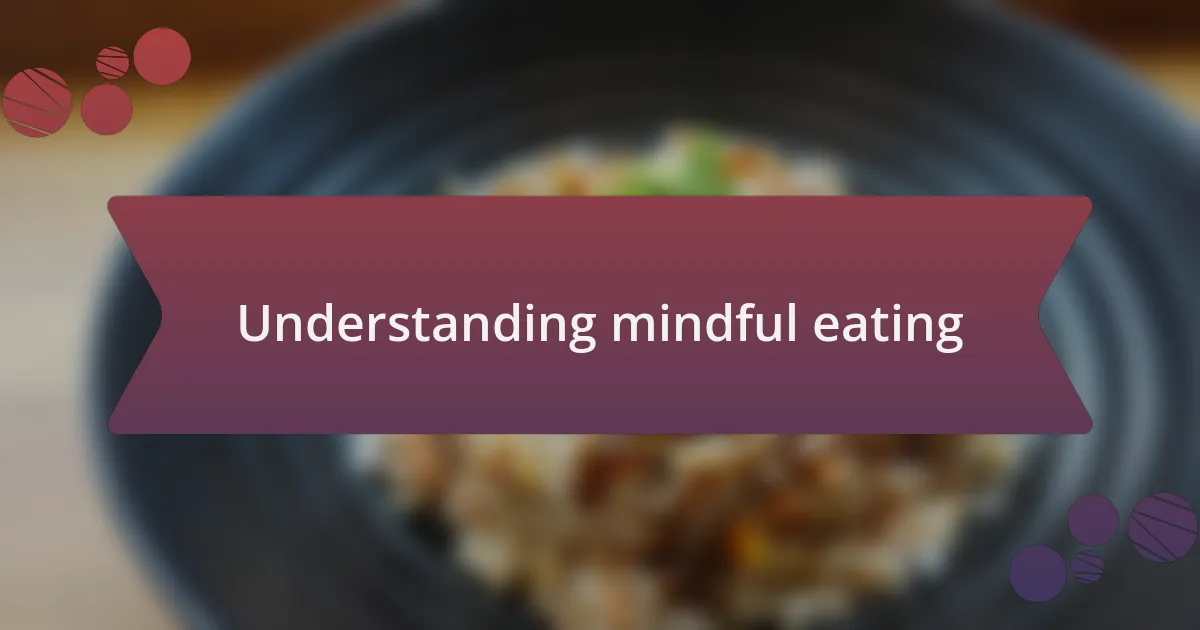
Understanding mindful eating
Mindful eating is all about being fully present during meals, allowing you to engage with your food on a deeper level. I’ve found that when I focus on the taste, texture, and aroma of what I’m eating, it transforms the experience entirely. Have you ever noticed how flavors pop when you actually take the time to savor each bite?
While eating mindfully, I often reflect on my emotions and thoughts surrounding the food. There was a time when I mindlessly snacked while binge-watching my favorite show, and it left me feeling unfulfilled. Asking myself how I truly felt after devouring that snack opened my eyes to the emotional connections we often have with food.
Incorporating mindful eating practices can also lead to healthier choices. When I pay attention to my hunger cues, I am more attuned to what my body needs. It’s fascinating to realize how often we eat out of habit rather than genuine hunger. What if we could shift that pattern just by taking a moment to pause before each meal?
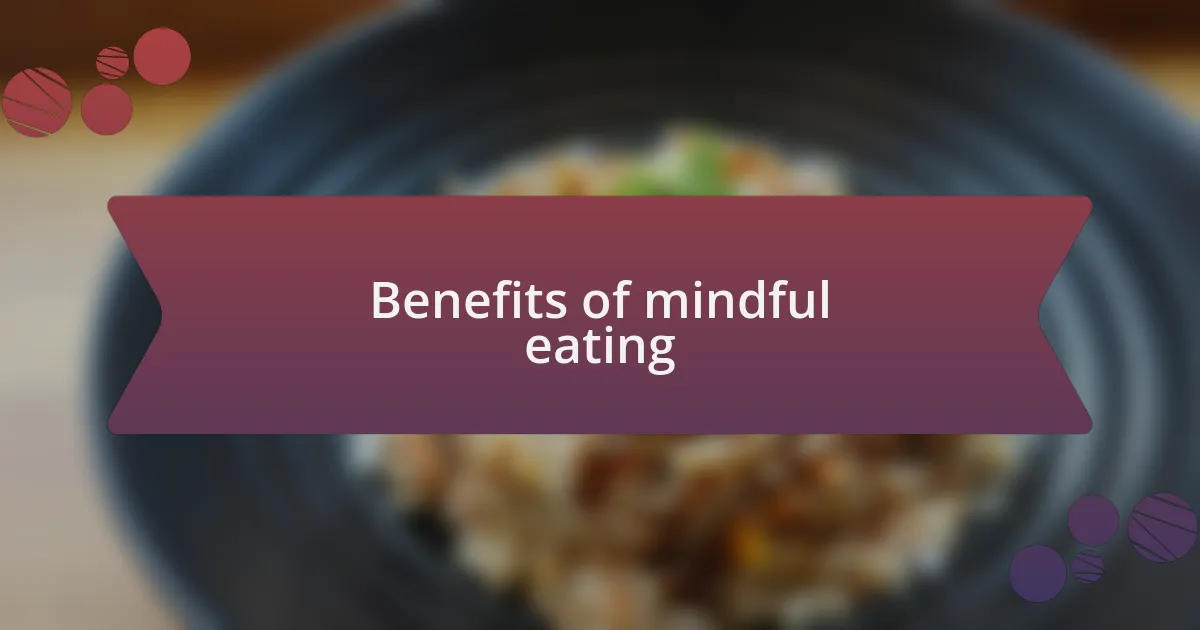
Benefits of mindful eating
One of the most profound benefits of mindful eating is that it can significantly enhance your overall relationship with food. I remember when I began to savor each bite more consciously; I was amazed by how much more enjoyment I derived from my meals. Instead of shoveling down my food, I started to appreciate the vibrant colors and distinct flavors, making my meals a celebration rather than a hurried obligation.
Another aspect I’ve noticed is the positive impact on my digestive health. By eating slowly and paying attention to my body’s signals, I found that my digestion improved tremendously. Have you ever felt discomfort after a meal because you ate too quickly? Mindful eating helps prevent that by allowing your body to process food more effectively, leading to a more satisfying dining experience.
Moreover, engaging in mindful eating often leads to better portion control. Early on, I would serve myself too much food simply out of habit, but now, I find myself intuitively taking less when I’m fully present during meals. Isn’t it liberating to know that by being aware of what and how much we’re eating, we can naturally align our portions with our true needs?
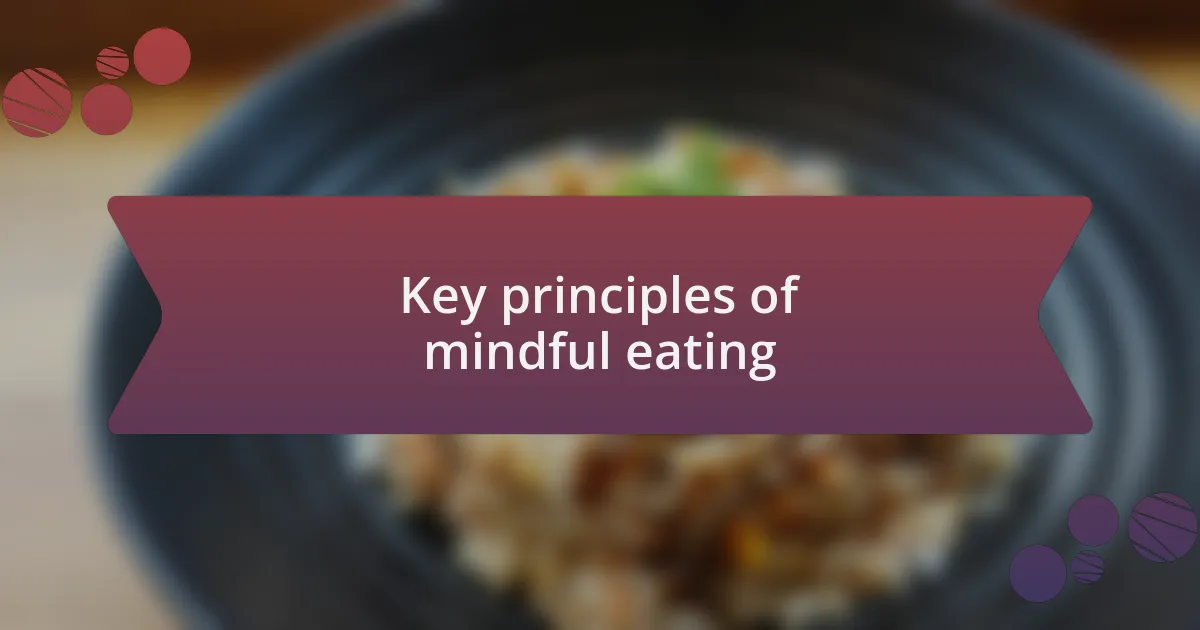
Key principles of mindful eating
One key principle of mindful eating is to eat with intention and attention. I vividly remember a dinner where I turned off the television and put away my phone. With no distractions, I focused entirely on the meal. It felt almost like a mini-meditation. Have you ever noticed how much richer the experience can be when you truly focus on what you are eating?
Another important aspect is listening to your hunger cues. Early on, I struggled with distinguishing between actual hunger and emotional cravings. By taking a moment to check in with myself before reaching for food, I’ve developed a better relationship with my body’s signals. It’s surprising how often I realized I wasn’t truly hungry but rather bored or stressed. Have you considered how often you eat without truly needing to?
Finally, savoring each bite is transformative. When I truly slow down and appreciate the flavors and textures of my food, I find that I need less to feel satisfied. I recall a time when I took a piece of dark chocolate and allowed it to melt slowly in my mouth. The experience was profound; it heightened my senses and made me feel grateful for the little joys in life. In your cooking adventures, how can you create moments to really savor the ingredients you’ve chosen?
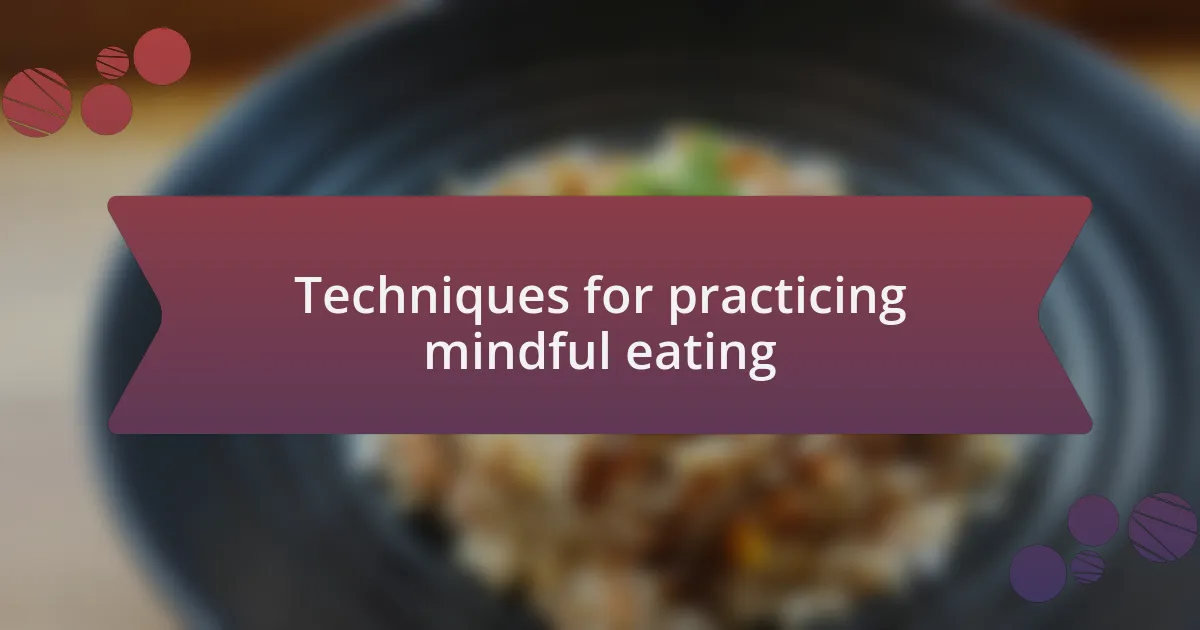
Techniques for practicing mindful eating
To truly practice mindful eating, I’ve found that it helps to create a calming atmosphere. Dim the lights or set the table nicely, as I often do. One evening, I lit a candle while enjoying a simple homemade pasta dish, and suddenly the meal felt like an occasion, not just a routine. How do you usually set the mood for your meals?
Another technique I’ve embraced is taking deep breaths before I eat. This simple act, which I learned in a mindfulness workshop, centers me and prepares my mind to engage with the meal. I remember a time when I took three deep breaths before a lunch filled with vibrant vegetables. Instantly, my energy shifted, and I could appreciate not just the food, but the colors and aromas, too. Have you ever noticed how just a moment of stillness can change your approach to eating?
Finally, I often practice gratitude before a meal. Reflecting on the journey of the ingredients—from farm to plate—adds a layer of appreciation that enhances my eating experience. I vividly recall a time when I acknowledged the effort of the farmers by giving thanks for my locally sourced salad. This small moment enriched my meal in ways I hadn’t anticipated. How might expressing gratitude transform your meals?
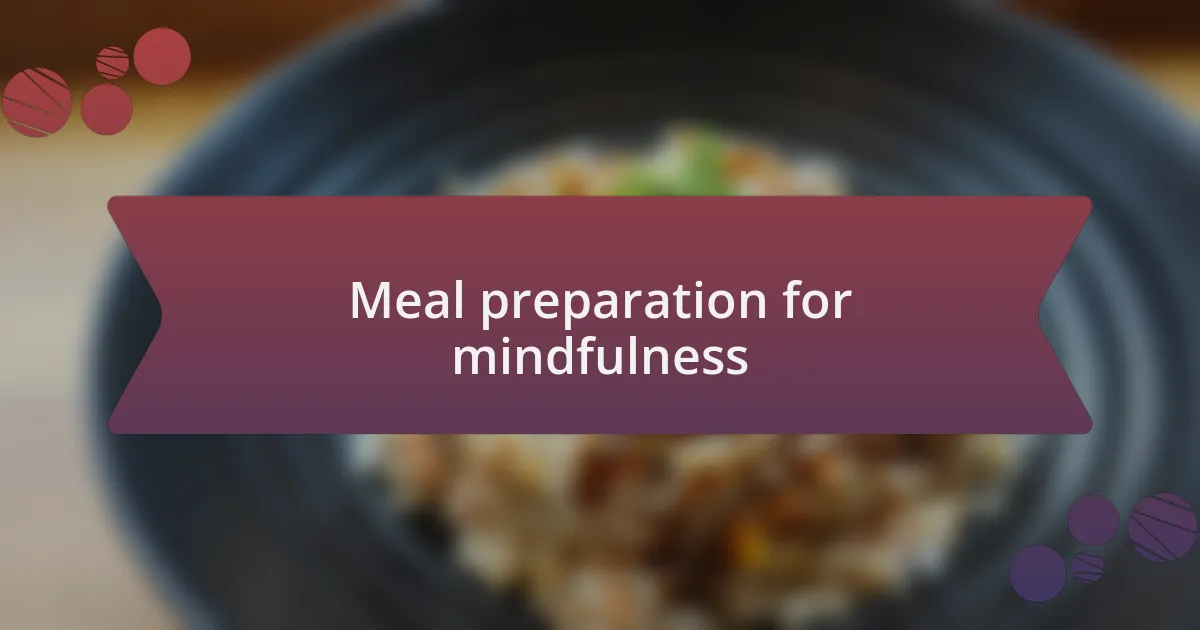
Meal preparation for mindfulness
Meal preparation is more than just cooking; it’s an opportunity to engage with the process mindfully. I often find that planning my meals in advance brings a sense of purpose to the kitchen. Once, I spent a Sunday afternoon chopping vegetables, fully engrossed in the colors and textures. The act of selecting fresh produce became meditative, making me appreciate the beauty of each ingredient while I envisioned how they would come together on my plate. How often do you take the time to enjoy the process before the meal begins?
When I prep my meals mindfully, I tend to create a more relaxed cooking environment. I light music that resonates with my mood and allows me to connect with the flow of the cooking process. I remember an evening spent preparing a fragrant curry; the spices danced in the air as I sautéed them. It felt like an art form, each step focusing my mind and enhancing my anticipation for the meal. Have you ever noticed how the atmosphere can transform your relationship with the food you’re preparing?
Involving all senses during meal prep deepens the mindfulness experience significantly. I’ve learned to engage not just my sight and smell but also my hearing—the sizzle of vegetables in a pan can be incredibly satisfying. Just the other day, while preparing a stir-fry, the sounds echoed through my kitchen, drawing me into the moment. It made me question, don’t the sounds of cooking also deserve our attention, adding texture to our meal preparation?
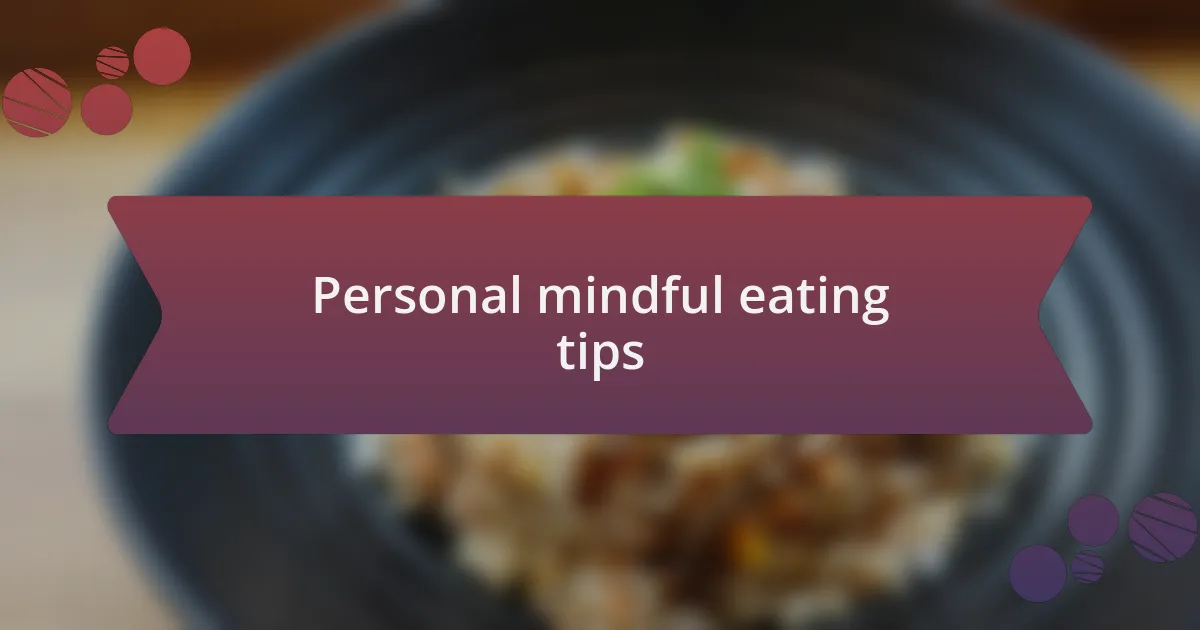
Personal mindful eating tips
Mindful eating starts with being present during the meal itself. I’ve found that taking a moment to breathe deeply before I begin eating transforms the experience. Once, on a warm evening, I sat outside with a simple salad and closed my eyes for a few seconds, focusing solely on my breath. It made me realize how often we rush through meals without truly tasting or enjoying each bite. Have you ever paused to savor a moment, and noticed how it changes your perception of the food?
As I eat, I try to chew slowly and appreciate each flavor’s complexity. There was a time when I savored a piece of dark chocolate, allowing it to melt on my tongue; it was almost a revelation. I noticed the subtle notes of bitterness mingling with sweetness. This practice not only heightens my enjoyment but also helps me recognize when I’m satisfied, preventing overeating. Have you tried paying attention to the flavors and textures of your food in this way?
I also make it a point to eliminate distractions during meals. I once made the mistake of scrolling through my phone while eating, and it detracted significantly from my enjoyment. Now, I turn off the TV and put my phone aside, focusing solely on my meal and my thoughts. This shift has renewed my appreciation for food and the time spent at the table. Can you imagine how different your meals might feel when you give them your undivided attention?
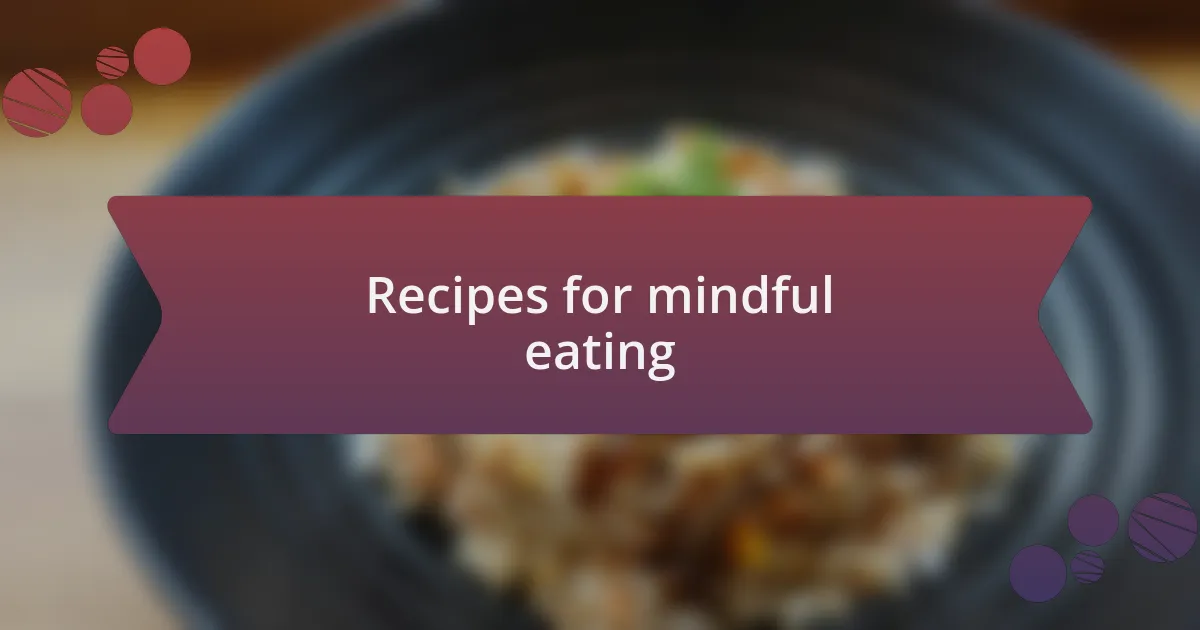
Recipes for mindful eating
When it comes to recipes for mindful eating, I’ve often found that simplicity works best. One of my favorite meals is a vibrant vegetable stir-fry. I take the time to prepare each ingredient mindfully—chopping crisp bell peppers and fragrant garlic while focusing on the colors and scents. As I sauté them slowly, I let the aroma envelop me, creating a deep connection to the food I’m about to enjoy. Have you ever noticed how fresh ingredients taste when you’ve invested care in their preparation?
Another recipe that resonates with me is a warm quinoa bowl. I like to layer it with roasted seasonal vegetables and a drizzle of tahini. While assembling my bowl, I consciously appreciate each component—the nutty quinoa, the earthy squash, and the creamy sauce. The act of layering not only makes it visually appealing but also invites me to take a moment to reflect on the flavors that await. Have you tried turning meal prep into a ritual that connects you to your food in this way?
Lastly, I believe that breakfast can be a mindful endeavor, especially when I prepare overnight oats. As I blend rolled oats with almond milk, chia seeds, and fresh fruit, I intentionally slow down. The anticipation builds as I layer in each ingredient, knowing that I’ll savor it the next morning. This small act of prep cultivates a sense of gratitude and excitement for the meal ahead. Have you ever experienced the joy of waking up to a breakfast that you’ve crafted with care the night before?